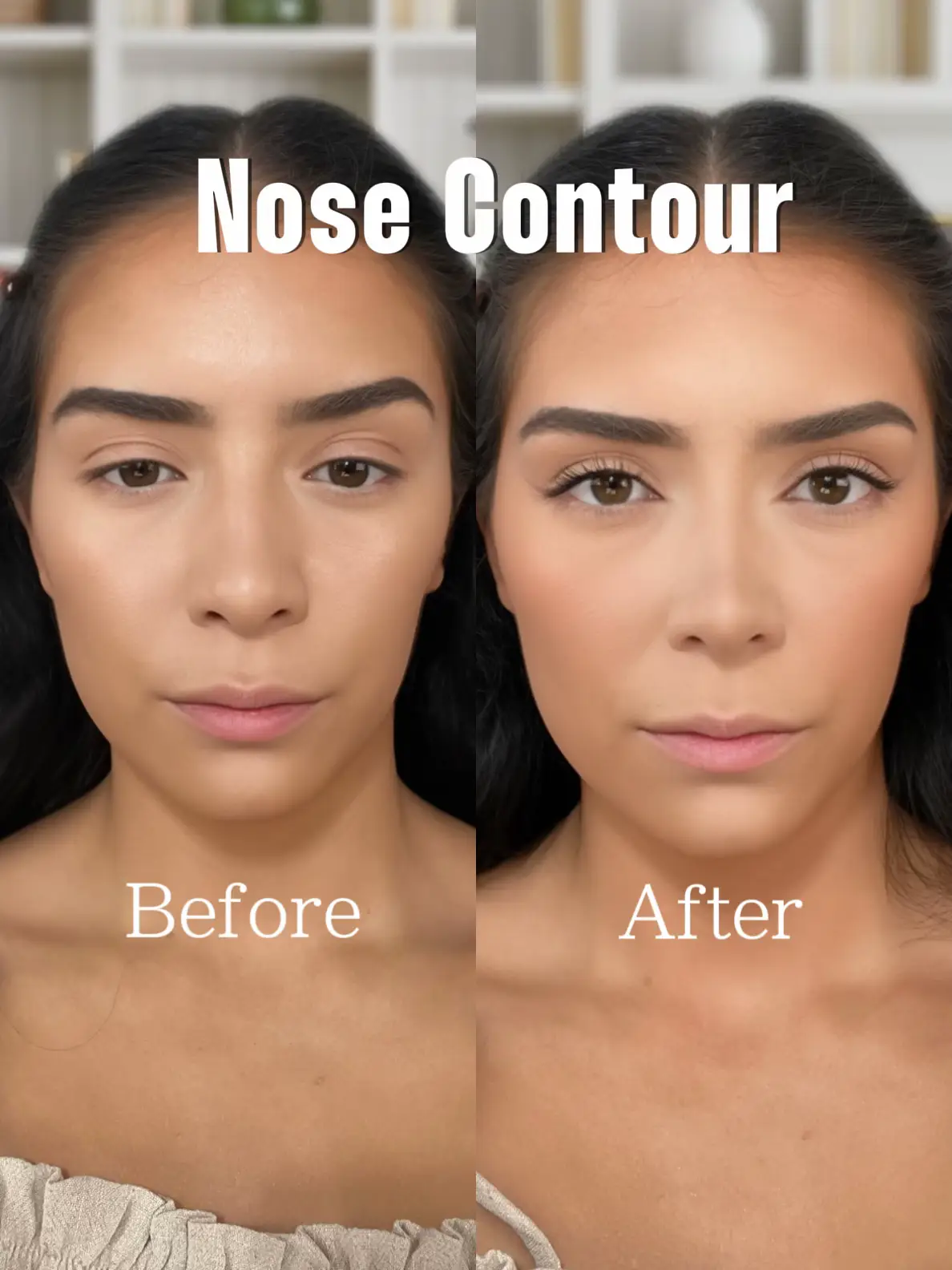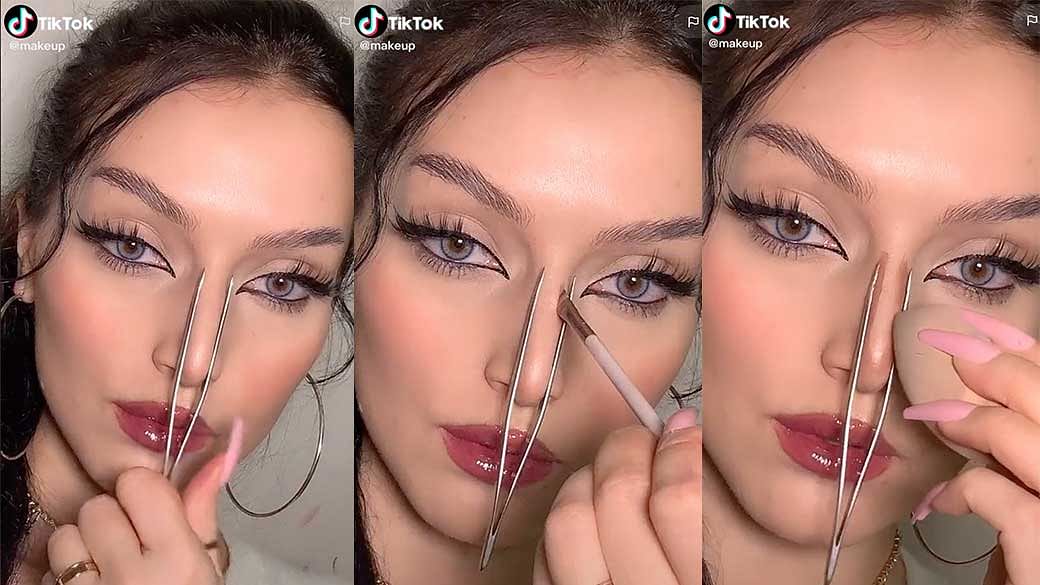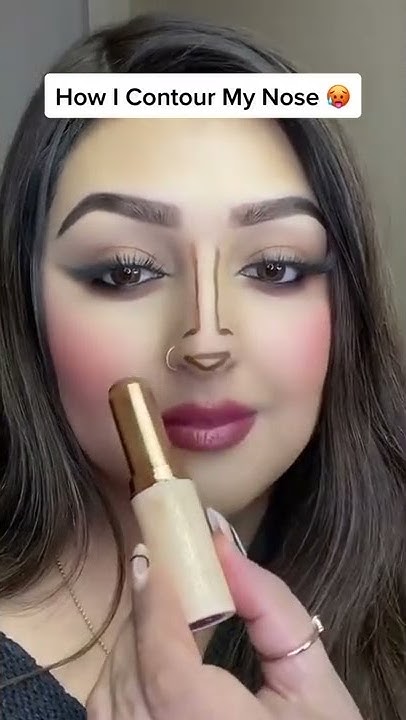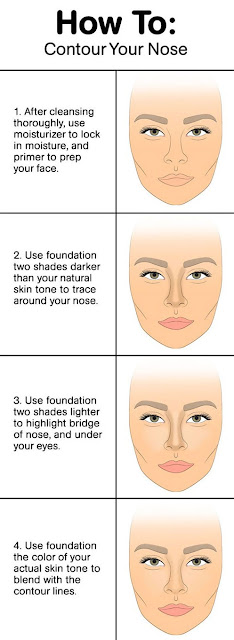How Do You Contour Your Nose

In the ever-evolving landscape of beauty trends, one technique has consistently held its ground: nose contouring. The art of sculpting and reshaping the nose with makeup has become a staple in many routines, offering a non-surgical alternative to altering one's appearance.
However, the seemingly simple process can quickly become complex, with various techniques and products promising different results. Mastering the art of nose contouring requires understanding facial anatomy, choosing the right products, and practicing precise application.
This article delves into the intricacies of nose contouring, providing a comprehensive guide to achieving a natural and flattering look, while also exploring different approaches and expert opinions.
The Foundation: Understanding Facial Anatomy and Light
Effective contouring starts with a solid understanding of facial anatomy. Identifying the natural shadows and highlights on your face is crucial for creating realistic dimensions.
Consider the bridge, tip, and sides of your nose as the key areas to address. By strategically placing shadows and highlights, you can subtly reshape these features.
Light plays a pivotal role in how contouring appears. Understanding how light interacts with your face will guide you in placing products accurately.
Choosing the Right Products: Contour, Highlight, and Blending Tools
The market offers a plethora of contouring products, each with its own texture, shade, and application method. Choosing the right products is vital to achieving the desired result.
Contour products typically come in powder, cream, or stick formulations. Powder contours are generally easier to blend for beginners, while cream contours offer more buildable coverage and a dewy finish.
The shade of your contour product should be two to three shades darker than your natural skin tone, ensuring a subtle yet noticeable shadow. For highlight, opt for a shade that is one to two shades lighter than your skin tone, with a subtle sheen to reflect light.
Blending is the key to a seamless contour. Use a soft, fluffy brush for powder contours and a damp blending sponge for cream contours to avoid harsh lines.
The Classic Contour: Step-by-Step Guide
Step 1: Preparation and Base
Begin with a clean and moisturized face. Apply your regular foundation and concealer to create an even base for contouring.
Set your base with a light dusting of powder to prevent the contour from blending unevenly. This step is especially crucial for oily skin types.
Step 2: Applying the Contour
Using a small, angled brush, apply the contour shade along the sides of your nose, starting from the inner corner of your eyebrow and extending down to the tip. Keep the lines as straight as possible for a slimming effect.
If you want to shorten the appearance of your nose, contour the tip of your nose in a slight U-shape. For a more defined bridge, apply a thin line of contour along the sides of the bridge, leaving the center clear.
Step 3: Highlighting
Apply a thin line of highlighter down the center of your nose, from the bridge to the tip. Be careful not to use too much highlighter, as it can make your nose appear wider.
You can also add a small dot of highlighter to the tip of your nose to add definition. Some makeup artist such as Lisa Eldridge suggest this technique, but use it cautiously.
Step 4: Blending
Blending is the most important step in nose contouring. Use a soft brush or a damp blending sponge to gently blend the contour and highlight lines until they seamlessly merge with your skin.
Pay special attention to the edges of the contour lines to avoid harsh lines. Blend in small, circular motions for a natural finish.
Alternative Techniques and Variations
Beyond the classic contour, several alternative techniques cater to different nose shapes and desired effects. These variations allow for greater customization and precision.
Contouring a Wide Nose
To make a wide nose appear narrower, focus on creating strong shadows along the sides. Use a darker contour shade and blend it thoroughly to minimize the width.
Avoid highlighting the sides of your nose, as this will only accentuate the width. Instead, focus the highlight on the center of the bridge to draw attention upwards.
Contouring a Crooked Nose
Contouring a crooked nose requires strategic placement of shadows to create the illusion of symmetry. Apply contour along the side that protrudes further, and highlight the side that is more recessed.
Blend carefully to soften the edges and create a balanced appearance. Bobbi Brown, a renowned makeup artist, emphasizes the importance of subtle adjustments when correcting asymmetry.
Contouring a Flat Nose
To add definition to a flat nose, focus on creating a higher bridge. Apply contour along the sides of the bridge to create the illusion of depth, and highlight the center of the bridge to add height.
You can also contour the tip of your nose to create a more defined shape. Be careful not to over-contour, as this can make your nose appear unnatural.
Common Mistakes and How to Avoid Them
Nose contouring can be tricky, and several common mistakes can lead to unflattering results. Understanding these pitfalls and how to avoid them is essential for achieving a natural and seamless contour.
- Using the wrong shade: Choosing a contour shade that is too dark or too warm can create harsh and unnatural shadows. Always opt for a cool-toned contour shade that is two to three shades darker than your skin tone.
- Applying too much product: Over-contouring can make your nose appear overly sculpted and unnatural. Start with a small amount of product and build up the intensity gradually.
- Poor blending: Unblended contour lines can create a harsh and unnatural look. Take the time to thoroughly blend the contour and highlight until they seamlessly merge with your skin.
- Ignoring your nose shape: Using the same contouring technique on every nose shape can lead to unflattering results. Tailor your contouring technique to your specific nose shape and desired effect.
The Future of Nose Contouring: Trends and Innovations
As the beauty industry continues to evolve, new trends and innovations are constantly emerging in the realm of nose contouring. From innovative product formulations to advanced application techniques, the future of nose contouring is promising.
One emerging trend is the use of "no-makeup" contouring, which focuses on creating subtle and natural shadows using lightweight products. This technique is ideal for those who prefer a more minimalist approach to makeup.
Another innovation is the development of contouring stencils, which can help beginners apply contour with greater precision. These stencils provide a guide for placement, ensuring that the contour is applied evenly and symmetrically.
Ultimately, mastering nose contouring is a journey of practice and experimentation. By understanding the principles of facial anatomy, choosing the right products, and refining your technique, you can achieve a natural and flattering contour that enhances your overall appearance. As Coco Chanel famously said, "Beauty begins the moment you decide to be yourself". Embrace your unique features and use contouring as a tool to enhance your natural beauty, rather than to completely alter your appearance.


















